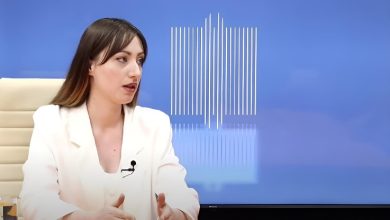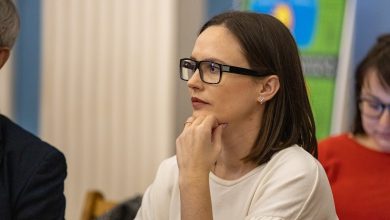Covering Elections Correctly: Mission (Im)Possible?

Nadine Gogu
IJC Executive Director
Since 2005, the Independent Journalism Center (IJC), under the aegis of the Coalition for Free and Fair Elections (CFFE), has been actively involved in electoral campaign monitoring, watching the media intently and encouraging them to do their job honestly, to cover the campaign correctly and impartially, offering equal access to all the electoral competitors. Throughout these years, we have had various experiences – some of them were good, and some were far from perfect. As we were making progress in conducting our campaigns and monitoring, judging by the reactions which followed, we realized that our reports mattered, and they could actually make a difference, even though they were ignored by part of the media they concerned in certain cases, as well as by the audiovisual regulatory authority. We have had situations when the initial reports related to the campaign were disputed by the newsrooms from the list of the partisan media, and later, as they improved their behavior (we would like to believe that it was also due to our reports), the same newsrooms invoked them as a source which certified the quality of their work. Some press managers insisted on including their institutions in the monitored media lists, and after the reports were published, TV executives approached us asking to directly explain in detail where their reporters had made mistakes so that they could eliminate the drawbacks. The reason was the newsrooms’ craving to realize how things were perceived from the outside, how the monitoring methodology was applied, and what they could do to improve the situation.
Recently, however, we have had fewer requests of this sort, in spite of the facts that our reports still include some issues worth considering. We will not keep insisting on the reasons per se which could explain the lack of the colleagues’ reaction; we will not insist on critical assessment of the behavior of each monitored TV channel during the last election campaign, either. In fact, figures and details are included in our reports, and anyone who is interested in these statistics can have access to them. This material is more of a plea for objectivity, correctness, and compliance with ethical and legal standards in the process of covering the elections.
WHAT, WHY, AND HOW?
For the last 18 years, the IJC team has been monitoring the media using various methodologies, but regardless of the type of monitoring (the quantitative one or the qualitative one) we have always aimed to encourage our colleagues to comply with the journalistic rules and standards stipulated both in the Journalist’s Deontological Code and in the legislation which regulates this sphere, including during the elections. During this campaign, as well as during the previous ones, we monitored all the materials directly or indirectly concerning the elections, the materials in which the parties’ representatives or the electoral candidates appeared, even in cases when the topics were not directly related to the elections themselves. We also monitored the news items which touched upon the activity of the Government, the Parliament, and the Presidency, as these protagonists play an important part in the public sphere, especially if we consider that all the three authorities are currently represented by a single party.
Since October 1, 2023, until the eve of the first round of voting, we counted the materials of direct and indirect electoral nature, their protagonists, as well as news sources, assessing the content from the perspective of the context in order to determine whether they were favorable or unfavorable to certain political actors. We assessed the tonality of the coverage from the point of view of the media outlet’s explicit opinion regarding the protagonists and the so-called framing of events or topics which could favor or disfavor the protagonists. Besides, we were filtering the content pursuant to the provisions of the Journalist’s Deontological Code and the legal provisions regulating this sphere.
We were guided by several objective coverage criteria for analyzing the materials:
- ensuring impartiality and objectivity and avoiding political partisanship;
- ensuring pluralism of opinions and the balance of sources;
- compliance of the language and video images with journalistic standards.
| The general tendencies registered during the 2023 general local elections have added to the results of the previous 14 campaigns we have been monitoring since 2005, and all of them follow the same pattern: a part of the media assumes the role of the authorities’ supporters and, implicitly, supports the governing parties by promoting their agenda directly and indirectly, while another group supports and promotes the opposition parties and at the same time demonstrates its own opposition to the central and local governance (depending on the types of elections). The third media group, which is relatively small, tries hard to stay objective and impartial and to keep to its editorial policies regardless of succession of the governing parties. Involvement in covering elections |
According to the CEC Regulations on the Coverage of Elections by Media Outlets, those audiovisual service providers which intend to cover the electoral campaign shall file to the Broadcasting Council (BC) a statement which includes their editorial policy for covering the elections, and it shall include at least three types of programs in their broadcasting: news and current affairs, electoral debates, and advertising. It is up to the broadcasters to choose the time interval, frequency, and amount of election programs, and this right cannot be interfered with. According to the Electoral Code, no interference in the editorial policy shall be allowed during the coverage of the campaign. In addition, according to the same article, the media shall provide airtime for electoral competitors under equal and non-discriminatory conditions, without demonstrating privileged attitude towards any of them due to the candidates’ social status and/or the positions they hold. Besides, once they assume an obligation to cover the campaign, the TV channels and radio stations shall comply with all the requirements stipulated by the regulatory documents. Respectively, when the broadcaster decides to include some electoral contestants in the newscasts in prime time while the others are covered outside these hours, the broadcaster breaches the legal provisions (intentionally or out of ignorance).
As the monitoring reports show, during the current campaign, such cases were few. It seems that the other broadcasters have learned the lesson from the rather recent history when some channels were severely criticized for broadcasting the electoral debates very early in the morning, when most voters were drinking their coffee in a best-case scenario, and did not repeat their behavior.
IMPARTIALITY AND OBJECTIVITY vs. POLITICAL PARTISANSHIP
To analyze these indicators, we have started from the premise that, according to the deontological provisions, news are supposed to be impartial and objective and shall not favor any parties/groups/persons to the others’ detriment. Journalistic objectivity presumes making a clear distinction between opinions and facts, both by means of choosing an appropriate approach and the details provided. Opinion-based materials and fact-based materials should be delineated so that anyone could easily make a necessary distinction between them. Actually, the presence of personal opinions in reports and news items is the first sign that reality is presented through the journalist’s point of view. Filtering the news and the minimal analysis of the context reveal that interests of certain parties are being protected instead of those of the general public.
The principles of correct and impartial coverage of issues of public interest, including during the elections, are listed in detail in the Code of Audiovisual Media Services (CAMS), as well as in the Electoral Code. To sum up, journalists not merely have the right, but are also obliged to provide equal access to the news to all the electoral candidates, and they should treat them equally, without discrimination.
This is what was supposed to happen, but what about the actual reality? The data from the current election campaign is more than obvious (see the details here), and it repeats those from the previous campaigns to a certain extent.
In general, all the 10 broadcasters monitored during the campaign for this year’s local general elections committed certain deviations from the legal and ethical standards, such as shifting the emphasis by means of selecting details included in the news, failing to separate facts from opinions, publishing unverified information, and tendentious and biased attitude towards the electoral competitors. There were numerous cases where the electoral news items were focused on presenting a particular image and selecting rather awkward moments such as some electoral contestants who spoke in a stuttering manner or flags blown to the ground by the wind and the candidates who looked scared as the flags were falling. We can theoretically admit that shifting accents or highlighting inessential elements from the press conferences instead of essential information was taking place because the reporters and editors did not quite realize that this manner of covering events demonstrates a tendentious and biased attitude towards certain electoral competitors. However, if this approach is repetitive and is perpetuated from one campaign to another, it obviously is a systemic problem. Even in case if a broadcaster demonstrates the same behavior in relation to all the candidates, it still shows a derisive attitude towards the competitors, and it can also serve as an indication of treating them in a discriminatory manner.
During the current campaign, we have seen quite a lot of materials in which facts are mixed with opinions, which is contrary to the provisions of Art. 13, para. 1 of the CAMS, according to which, media service providers shall ensure a clear distinction between facts and opinions. The Journalist’s Deontological Code is also very explicit in this regard, emphasizing that there is no place for opinions in the news, which, we would like to believe, is known to many of our colleagues. But it seems to be quite a long way from knowing it to its practical application. Otherwise, we would not be able to explain why so many bottom lines included claims/accusations which were not attributed to any sources, or why the leads presented opinions without informing whose they were – the protagonist’s or the reporter’s/editor’s? Or why did reporters resort to numerous adjectives to characterize a protagonist? No matter from which perspective we try to consider this issue and to find a justification for it, we see a mixture of facts and opinions, anyway.
Besides, while documenting the news, several channels resorted to social networks more than once, selecting sources and/or images from there without making any further efforts to verify the facts themselves. Again, this is a deviation from the Deontological Code which demands from us to check the sources thoroughly and to ensure their authenticity, as well as from the CAMS (Art. 13), which stipulates that the media shall inform about a fact or an event correctly, and that the information shall be verified and presented impartially and conscientiously. It would be good to know that gathering information from various online sources without checking them properly involves certain risks, because we have no way of knowing whether the persons behind the photos or profiles are real or fake.
Political partisanship
As to providing access to the candidates’ news and their fair and non-discriminatory treatment, we should note that, during the current campaign, no single channel managed to cover the activity of all the candidates for the post of mayor of the capital for a specific period of time. It is quite understandable if we consider that their number was quite large. Yet some newsrooms’ efforts to treat the competitors equally were more obvious: they did not limit themselves to covering the candidates’ press conferences, but provided their election ads or video presentations, managing to cover a relatively large number of candidates. The others preferred an easier way, covering only the events organized on the day of the relevant newscast; hence, more active candidates were favored by the greater frequency of appearances. It should be appreciated that some newsrooms managed to solve this issue by ensuring a balance of appearances and providing a detailed account of the number of the events covered. There were also some cases when the monitored channels deliberately ignored campaign events organized by certain candidates, which may resemble an idea of manipulation by omission and discrimination by means of blocking access to the newscasts.
But we must render to Caesar the things that are Caesar’s. Unlike in the previous years, during the current campaign, we had fewer clearly partisan TV channels massively favoring or disfavoring any electoral contestants. The electoral newscasts were mostly correct, impartial, and non-pluralist, and favoring or disfavoring was manifested by a high or low frequency of the candidates’ appearances and positive or negative contexts in which they were presented. However, during the election monitoring, one plus one is not always equal to two. Statistical figures/data are irrelevant if analyzed out of context. When an electoral candidate appears in two news items on a daily basis, talking about his electoral platform in the first one and replying to the accusations against him by various other persons in the second one, we cannot say that such a protagonist benefits from an extended airtime or is favored by the frequency of appearances and the time allocated for them.
Another important aspect is related to the massive presence of central or local authorities in the newscasts which are often analyzed in an indirectly electoral context. We anticipate a series of arguments justifying their permanent presence on the screens during the election campaign by public interest. We also heard similar arguments during the Communist government, and during the governments which succeeded each other for the last ten years; they were mostly formulated by the public broadcasters and persons affiliated with the central or local governance. We provide counter-arguments now the same way we provided them at those moments: a multitude of news items with positive connotations about the governmental/municipal authorities’ activities which directly or indirectly support some parties’ electoral platforms need to be thoroughly filtered; it requires obtaining brief information about the events with their participation and filtering electoral slogans and/or information regarding the support the CPAs or the LPAs obtain, for instance, from many local or international stakeholders. Without emphasizing the promises of increasing salaries, constructing roads, launching business support programs, and so on, and so forth, or without broadcasting materials to illustrate the multitude of unsolved issues due to the central or municipal administration’s incompetence on a daily basis.
News of this sort can and should be constantly on the media agenda outside the election campaign, and during the campaign, the media is supposed to stay in the center, ensuring the so-called happy middle ground and letting the candidates present themselves and discuss eventual problems and their solutions. Otherwise, reasonable suspicions of biased and partisan media coverage will be raised, which will be contrary to the legal provisions.
ENSURING PLURALISM OF OPINIONS AND BALANCE OF SOURCES
To be correct and balanced, press materials should provide a multitude of diverse opinions in order to help the audience have their own opinion of the events. Journalists should ensure plurality of opinions even if they disagree with them, obtain and present opinions of all the parties relevant to the topics, especially if an issue is controversial, and they should treat the opponents equally. However, if particular points of view are given more attention than the other ones, they become prominent and can have an implicit impact on the public’s perception of what happens in society. This is what the Journalist’s Deontological Code signed by a large part of our press stipulates; it also provides that a journalist shall comply with the principle according to which any person subjected to negative criticism has the right to reply. If there is no possibility of ensuring the right to reply or if the person concerned refuses to reply, a journalist shall announce this fact (provisions 2.33 and 2.35 of the Journalist’s Deontological Code of the Republic of Moldova).
Similar provisions are also included in the CAMS (Art. 13, para. 4, 6, and 7), which stipulates that the news shall be well-documented, cite reliable sources, and provide balanced opinions, ensuring impartiality and balance, favoring free formation of opinions by presenting the main opposite points of view, and avoiding any types of discrimination. The Electoral Code (Art. 89, para. 2) also stipulates media outlets’ obligation to comply with the principles of equity, balance, and impartiality while covering elections.
Nevertheless, a multitude of similar provisions has not made the press more politically pluralistic, and diversity of opinions is absent from most election-related materials broadcast during this year’s campaign. Dozens of news items which appeared to be based on multiple sources but actually expressed the same point of view have passed through our filters. Many channels broadcast vox-pop-type polls which quoted a number of respondents, but most of the opinions expressed either supported the topics discussed or were in opposition to it. Still, we have also had some successful cases: one TV channel managed to present its polls like a book, providing opinions from both sides and balancing them in terms of airtime and gender.
As to the balance of the conflict-related news items, things were much better this year: in the vast majority of cases, the monitored channels managed to present the views of all the conflicting parties or to mention that the persons concerned had not answer the phone or had refused to provide any comments. We do not exclude that this is also due to the Broadcasting Council which has been strictly monitoring these aspects in the recent years, reacting promptly whenever it detects any breaches from the legal provisions.
ENSURING GENDER EQUALITY
During the current campaign, we also assessed the way in which the monitored channels ensured gender equality pursuant to the CAMS (Art. 18), according to which, media service providers shall promote and comply with the principle of equality between women and men when broadcasting audiovisual programs. By applying this indicator, we intended to encourage the media outlets to use female news sources more frequently. Nevertheless, the data from this campaign was far from encouraging and repeated the previous years’ tendencies. The argument that most candidates/competitors were men, hence, they predominated in the list of sources is acceptable; but, at the same time, it should be noted that this indicator was relatively balanced for several channels, as women were among the vox-pop survey participants as well as experts in certain fields. Therefore, it is possible; our intention is the most important thing in this regard!
It should be mentioned that the news items we watched did not contain any sexist language, scenes of violence, or degrading behavior towards women and men in the audiovisual media services.
Language and video images used
Responsible journalism implies not only truthful presentation of facts, but also using a correct and decent language in the news items. Deliberately used exaggerations and indecent language, such as pejorative expressions or labels attributed to certain persons or organizations, as well as images manipulated in order to present certain parties in a negative light raise serious questions regarding compliance with ethical and professional standards. Journalists’ deontological behavior is questioned most of the time when the images do not correspond to reality, when they are edited, and when certain news are illustrated with images which are not related to the informational part of the text.
As to the CAMS (Art. 13, para. 5), it also clearly stipulates that there shall be a real connection between the topic covered and the images accompanying the comment, and the titles and texts on the screen shall reflect the essence of the facts and the data presented as reliably as possible.
The results registered during the election campaign for the 2023 general local elections reveal that, in this segment, things were better compared to the previous years. With the exception of some minor technical errors, the media demonstrated a decent behavior without resorting to editing tricks to present some candidates in a negative light.
As to the language used, most channels abundantly used such labels as “Sor’s criminal group” or “the fugitive Sor.” In a number of cases, they were included as part of the quotes, but, at the same time, such phrases were also used by the reporters as a formula for introducing the protagonist. We would like to reply to eventual reactions doubting our considerations regarding the nature of the deviation that it is very important to present the protagonist’ status in the newscasts, but not by means of labeling, even if that is somewhat simpler for the reporters. We have to anticipate that news items of this kind can be viewed by those who may be unfamiliar with the current state of affairs of the Republic of Moldova or are unaware of all the details of this case; respectively, a non-rhetorical question arises: will they understand such a phrase as “the fugitive Sor”? Who did he escape from, where did he escape, etc.? Things would look completely different if the news items included contextual information about his conviction, the reason for the conviction, and the international arrest warrant issued against the protagonist. Thus constructed, in addition to providing more details shedding light on the protagonist, the news item will leave no trace of suspicion of the authors’ tendentious and biased attitude.
To conclude, judging by the results of some audiovisual media service providers who, in particular segments, demonstrated a balanced and correct behavior while covering the campaign, it can be deduced that the mission is not impossible. It is possible; the important thing is to complete it.
This analysis is made possible by the generous support of the American and British people through the United States Agency for International Development (USAID) and UK. The contents are the responsibility of IJC and do not necessarily reflect the views of UK, USAID or the United States Government.




